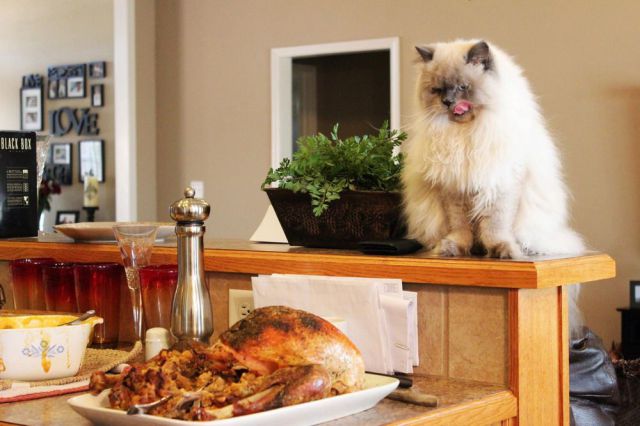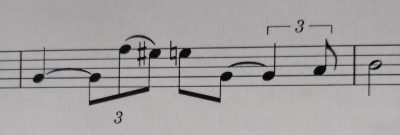Welcome to our forum. A Message To Our New and Prospective Members . Check out our Forum Rules. Lets keep this forum an enjoyable place to visit.
Currently working on errors from the latest (SimplePress) forum update. Many issues have been resoled and others are being worked on. Thank you for your patience.
 Topic RSS
Topic RSS Related Topics
Related Topics




 (3 votes)
(3 votes) Regulars
 Offline
Offline








We are shown that different hand/finger positions can be played along the fingerboard.
Sometimes it isn't very clear when we should use some of these.
Here's an article by Penny Kruse at Violinist.com:
Demystifying Violin Fingerings: Guidelines for Making Good Choices
It covers help choosing:
- String crossings.
- Open strings vs stopped notes.
- Using one finger for multiple notes.
- Shift vs slide.
- Using harmonics.
While you're pondering where to place all 4 of your fingers, here's an article from The Strad by violinist Clayton Haslop.
Why I Had To Learn To Play The Violin With Two Fingers

Sometimes feel a little clumsy?
- Emily
Regulars
 Offline
Offline








Hope it's helpful. 😊
I forgot I wanted to share another linked article from the Violinist.com, about the 'Dreaded Pinkie', by Paul Stein. (lol) It's a good thing, if you are capable of using your Pinkie.
We need to be kinder to our Pinkie!
The Fiddler's Fear of The Fourth Finger

No more torture!
- Emily
Regulars
 Offline
Offline





If your pinky rarely reaches far enough, it may be that your thumb is too close to the scroll.
There's also this idea: people tend to position their first finger and thumb then stretch "up" to their pinky. It's better to position pinky and thumb and then stretch "down" to the first finger.
I look forward to reading Penny's article in full, but it may be a bit too pedantic in places - where she says "don't use the same finger more than twice", I disagree. Sometimes glissandos are more than useful, e.g in Elgar's Salut d'Amour, where also there are several places where you can and should use the first finger 3 times in a row for semitone shifts/half shifts because bow direction changes mask them and prevent unwanted glissandi.
Andrew
Verified human - the ignominy!
Regulars
 Offline
Offline








@Gordon Shumway -
Thank you! You got me thinking!

I just realized, maybe I should mention this for Violinists new to trying Fiddle music.
Fingering for Fiddle music - if you run across music where the fingering seems unnatural, consider that the tune may have been meant to be played cross tuned or tuned down.
Many times no one tells ya! 🤣
- Emily
Regulars
 Offline
Offline





ELCBK said
Fingering for Fiddle music - if you run across music where the fingering seems unnatural, consider that the tune may have been meant to be played cross tuned or tuned down.
Yes, this is possible.
Also something I wondered about the other day is music written for different instruments doesn't necessarily always work. A (folk) flute or banjo piece may not work on a fiddle. And some Vivaldi etc is very annoying to play on a piano.
I was looking at Django Reinhardt's Nuages a few months ago. I forget what the problem was, but it may have been to do with how many fifths there are in it, combined with chromatic scales - these aren't much of a problem on guitar, but they require quite a lot of technique on the violin if they are to work at all. It's easy to imagine Grappelli playing it in your head, but I think Django was the only one to play it. I'll look at it again some time.
Andrew
Verified human - the ignominy!
Regulars
 Offline
Offline








@Gordon Shumway -
I get that!
Some accordion pieces can give me trouble on the violin - off hand I can think of at least one mazurka I really wanted to play that was hard for me as written, but luckily a found another Key to be sooo much easier.
Of course, if I had to play along with that accordion key, maybe trying to harmonize might be an option vs difficult fingering.
So trying another Key might be an option, but I think if I had trouble finding an easier Key I would probably consider a different tuning, next.
Do you know what tunings Django favored?

I don't know much about guitars or what they might use for Jazz or Blues tunings. I'd also have to think about what would work best for my 5 String.
- Emily
Regulars







Regulars
 Offline
Offline







Regulars
 Offline
Offline







Regulars
 Offline
Offline








@JohnG -
You might find this chart helpful - I LOVE IT!
First Position Viola Fingering Chart

Have a Happy Thanksgiving!
- Emily
Regulars
 Offline
Offline





JohnG said
@AndrewH - That's the way I've been playing it, but it seemed difficult to move from F# to F♮ with the same finger without sliding (or getting lost).Thank you, guess I should keep practicing!
I agree with AndrewH and Fiddlerman. The thing about sliding on 2nd finger is that, with a little practice, you use the change in bow direction both to mask the slide and also to correct the intonation of the F♮.
Andrew
Verified human - the ignominy!


 Log In
Log In Register
Register





















